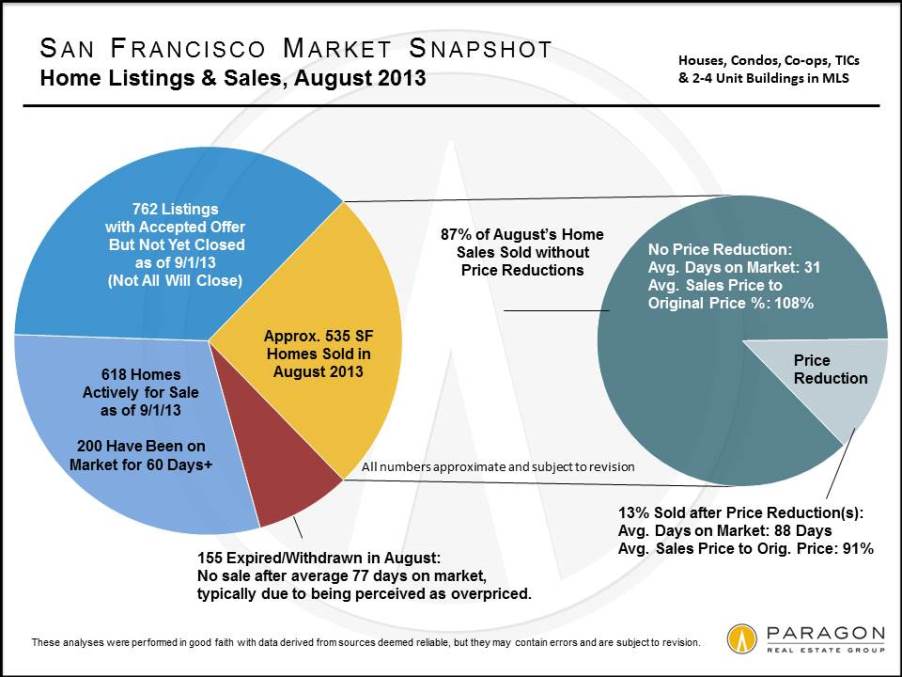The Autumn Selling Season-September 2013 Market Update
The Autumn Selling Season, Seasonality & Changing Market DynamicsSeptember 2013 San Francisco Real Estate Market Report
Is the market flattening out after its huge appreciation surge since 2012 began, or will the autumn sales season bring another step of renewed price increases? Right now, there are some mixed signals regarding what is occurring in the San Francisco market: spring's big jump in values vs. the recent plateau in median sales prices; interest rates that have increased significantly, but are still extremely low by historical measures; growing signs of buyer burnout with frenzied market conditions vs. supply and demand statistics that still indicate a very strong sellers' market; and an increasing number of expired listings, which suggests that sellers may now be pushing their asking prices too high for buyers to swallow. Seasonality plays a significant role in median sales prices rising in spring and autumn, and declining in summer and winter - as discussed below, much of this pertains to ebbs and flows in the luxury home market and does not necessarily reflect changes in home values. With real estate statistics, the longer-term trend is what is meaningful, not short-term fluctuations up and down. Looking at the chart above, the median sales price jogs up and down for a variety of reasons, including seasonality, but stepping back, one sees the strong, ongoing appreciation since the market recovery began. September is typically the month with the highest number of new listings hitting the market: how buyers respond will determine what the next stage of the market will look like. |
||||||||||||||||||||||||
|
||||||||||||||||||||||||








